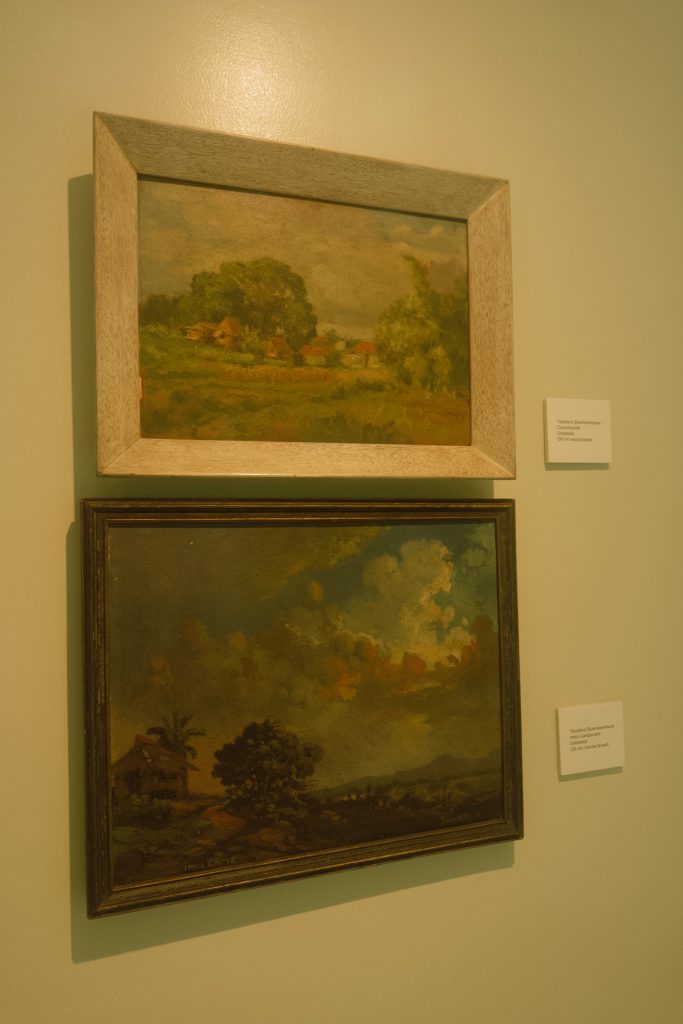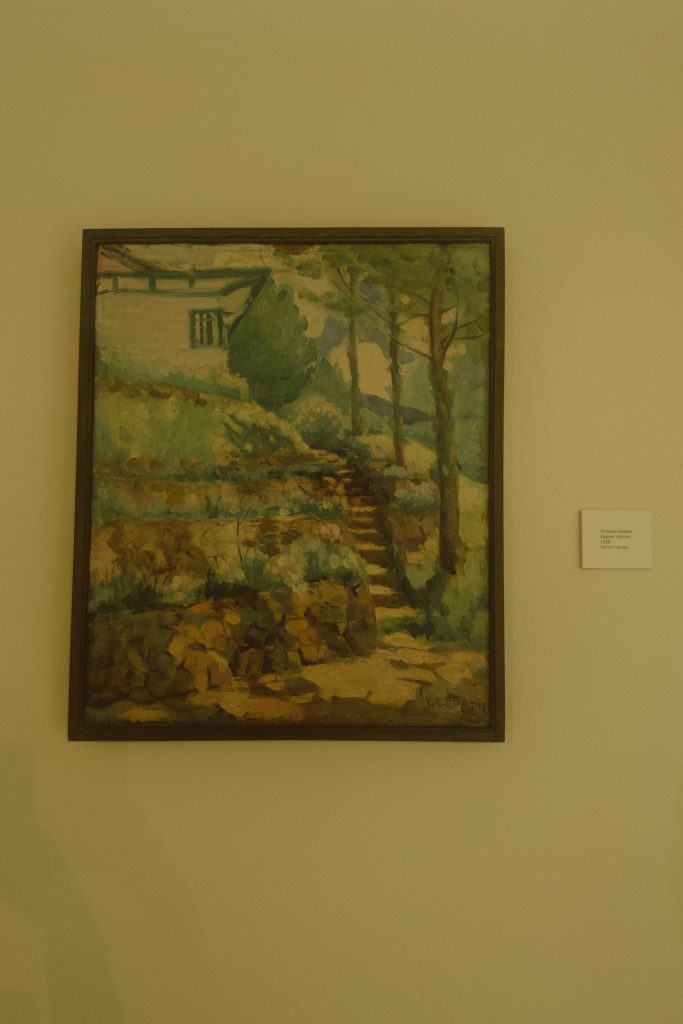
Aliyah Lhuk Piawan | Arts 1 [Critical Perspective in Arts] WFV-3 Class
Posted on September 19, 2025
I didn’t plan for it to be meaningful.
It was just a fine Friday afternoon, and for once, I had no deadlines to chase or exams to worry about. Instead of heading home or catching up on rest, I followed a quiet impulse and walked into the Vargas Museum, alone. As a second-year Bachelor of Sports Science student, my life usually moves fast. I am used to tracking progress in reps, heart rates, and muscle performance. But that afternoon, I chose stillness over speed. I slowed down, not just my body, but my thoughts and emotions too.
The moment I stepped into the museum, the world hushed. A calmness took over, inviting me to pause and just be. I wandered from floor to floor, but it was the second level that pulled me in the most. Every piece felt carefully chosen, each detail whispering something honest. With mrld’s “An Art Gallery Could Never Be As Unique As You” playing softly in my AirPods, the line “Your colors caught my eye / And you’re my favorite sight to see” mirrored exactly how I felt.
It was more than just an exhibit. It was an experience. Let me share a few of the pieces that moved me the most.

One part of the Vargas Museum that stood out to me was a space with a wall text by the Filipino painter Fabian de la Rosa, written in 1930. In his words, de la Rosa shared his strong belief that true artistic expression can only grow in a free and independent Philippines. He believed that when artists have freedom, they can show the true spirit of the Filipino people through their art. He explained that freedom helps artists become more creative and sensitive. On the other hand, when a country is under control or oppression, art suffers too. Artists are not only affected in their work but also in their spirit.
The museum’s large windows, showing a view of trees and greenery, made me think more deeply about his message. Nature and freedom are both important in helping Filipino art and culture grow and stay alive. This idea stayed with me as I moved through the galleries and encountered artworks that seemed to echo that same connection – between land, life, and identity.

Teodoro Buenaventura’s paintings present scenes from everyday life in the Filipino countryside. Nipa huts, farmers at work, and quiet rural landscapes. These images go beyond simple representation; they reflect the values and rhythms of a community deeply connected to land and tradition. Viewing these works created a sense of connection not only to the subjects but also to the broader Filipino identity. They reminded me of the hard work, resilience, and strong sense of community that are central to life in many rural areas of the Philippines.

Meanwhile, Baguio Garden by Victorio Edades offers a different yet equally meaningful perspective. Painted in soft, impressionistic strokes, the artwork shows stone steps leading to a house partly hidden by trees. The composition suggests a gentle balance between nature and structure, reflecting how many Filipinos live in close relationship with their environment. The use of light and shadow in the painting gives it a quiet, reflective mood, almost like a memory. Other works in the same space showed trees, still waters, and skies at dusk, emphasizing how natural elements play a key role in shaping Filipino experiences and emotions.

Looking at the paintings Pasig River Scene by Ramon Peralta (1904) and Kanlaon Mountain by Maria Iglesias made me reflect on the connection between art, history, and the present. Peralta’s painting shows the Pasig River as calm and peaceful, surrounded by trees and nature. It is sad to think that this same river, which once looked so clean and full of life, is now heavily polluted and neglected. On the other hand, Iglesias’s painting of Mt. Kanlaon shows the beauty and strength of our countryside. Both artworks remind us of how rich our culture and natural environment are.
What started as a simple decision – a spontaneous visit to the Vargas Museum on a fine Friday afternoon – ended up meaning much more than I expected. As a modern Filipino, these paintings awakened something in me: a deeper respect for our heritage and a reminder to care for the land and stories that shaped who we are today. But more than anything, what stayed with me was how art invites you to be fully present.
As a student in sports science, I am used to focusing on results, whether it’s scores, time, or strength. But inside the museum, there was no pressure to perform or compete. It was just me, looking, thinking, and feeling. That quiet moment gave me a different sense of freedom. I realized that learning doesn’t always happen in a classroom or training facility, it can also come through stillness and reflection.
Being alone in the museum made me more honest with myself. I didn’t feel the need to fully grasp every artwork. I was just there, letting myself take it all in. And in that process, I understood how much I value calm and meaningful experiences like this. It reminded me that stepping away from daily routines can lead to growth, too.
My visit to the Vargas Museum wasn’t just a break from my usual schedule. It became a reminder that learning can take many forms. It encouraged me to explore things beyond my field, to stay curious, and to embrace unfamiliar spaces. Sometimes, growth happens when you allow yourself to simply experience something new.
I’m not an expert in art, but I found something meaningful in that quiet time. If you ever get the chance, I really recommend visiting a museum or trying something outside your usual interests. You might end up learning something important, not just about the world, but about yourself.
Aliyah Lhuk Piawan is a second-year Bachelor of Sports Science student who finds joy in exploring ideas beyond the world of sports. With a growing curiosity for different fields, she uses writing as a space to reflect, express, and connect. Through her pieces, she hopes to share her journey of stepping outside her comfort zone, inviting others to do the same and engage with the broader conversations shaping today’s world.
